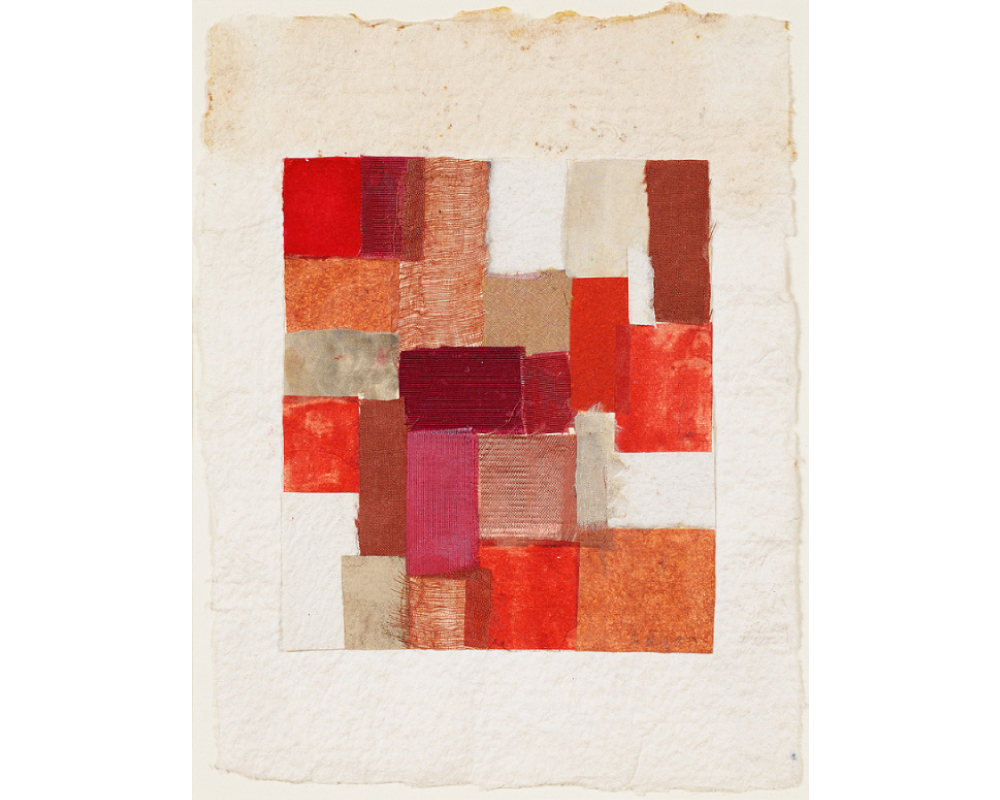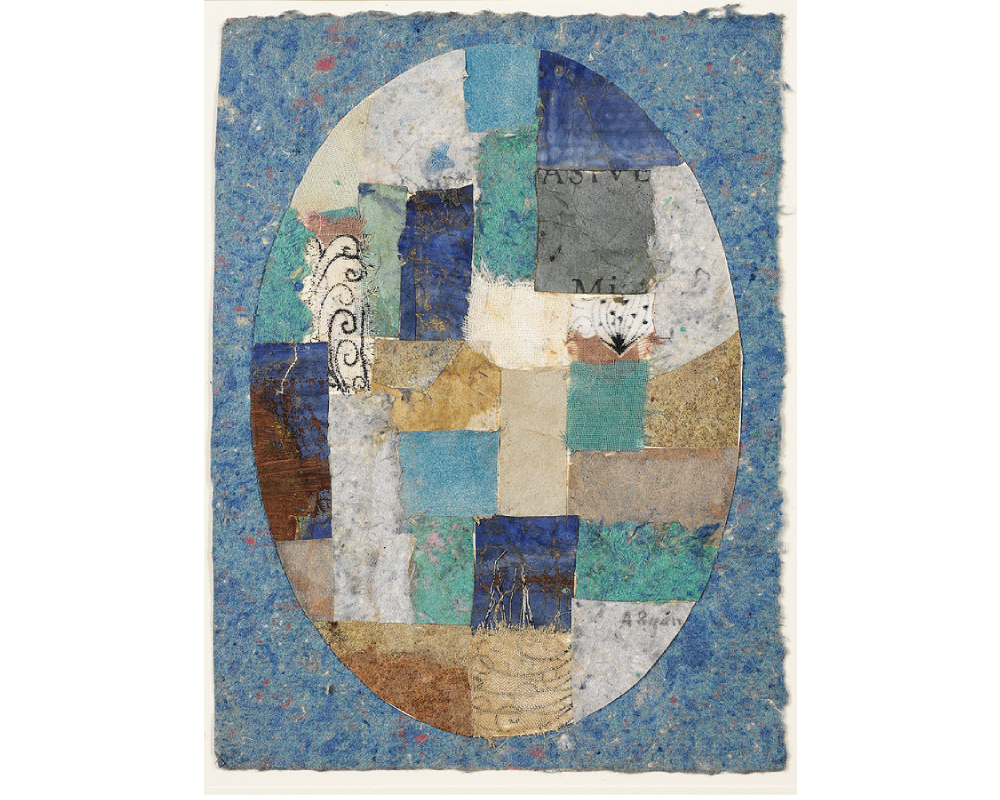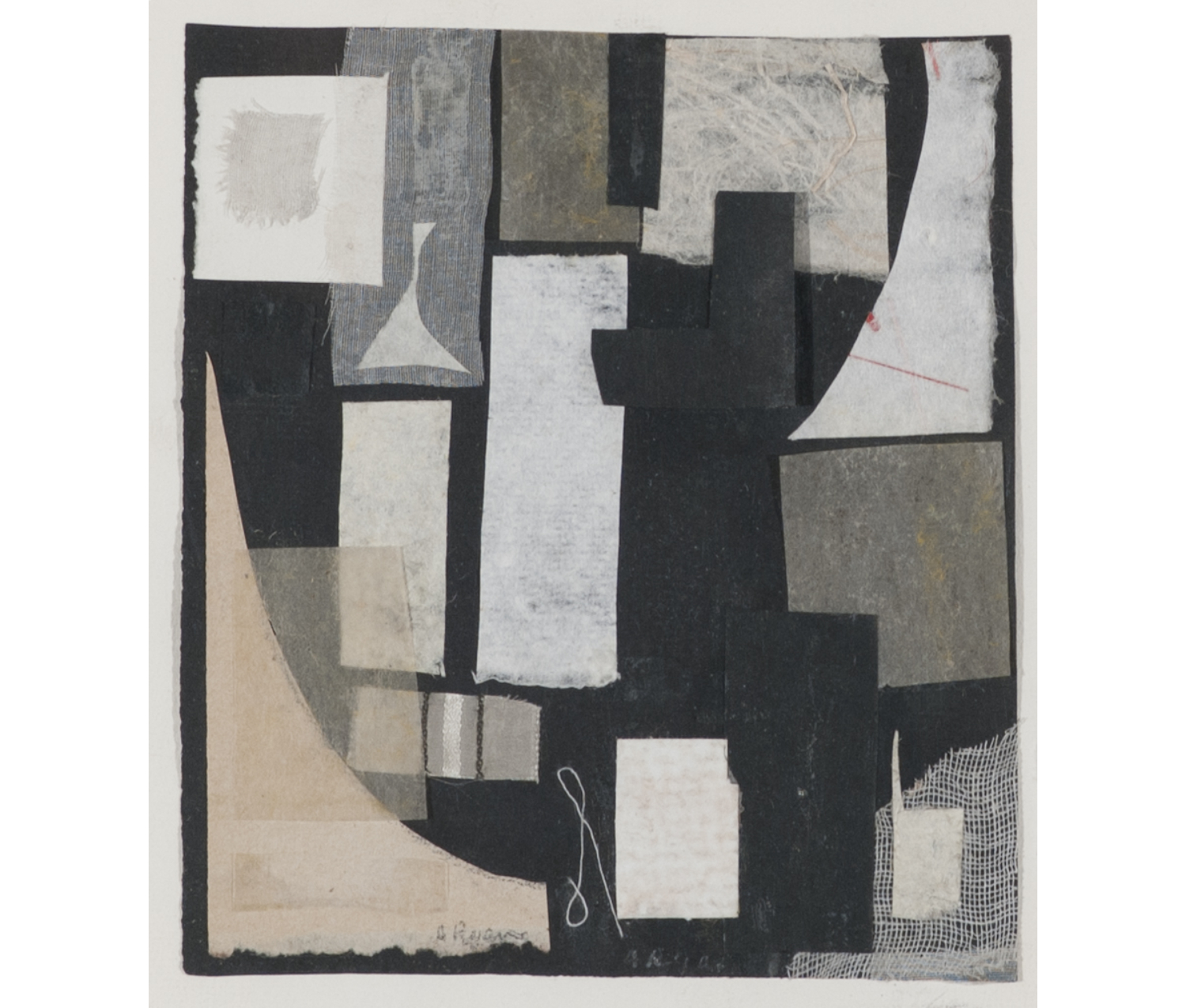
Transforming Dish Towels: Anne Ryan's Collages
Guest blogger Renee Klann is a member of the class of 2019 and was the 2015–2017 STRIDE scholar in the Cunningham Center for Prints, Drawings, and Photographs.
Anne Ryan didn’t start making collages until she was 58, but once she found the medium, she embraced it eagerly. In 1948 she visited an exhibit of the German artist Kurt Schwitters’ work, which included collages. Ryan’s daughter Elizabeth McFadden said that her mother was so inspired by the exhibit that she made her first collages the same day. “Mother went from one collage to another in a passion of delight,” she recalled. “We went home and before she put water on for supper, she was at her work table making collages.”
Over the following six years, Ryan created about four hundred collages. She used a variety of materials, including silk, burlap, and Japanese rice paper. The components were often recycled, showing signs of their original use. McFadden said that her mother saved old dish towels to use in collages. “When something in the house got old, acquired by wear a ‘feel,’ and to the usual person was ready for the trash can, we would say, ‘Now it‘s getting to the collage stage.’” Ryan turned the debris of everyday life into art, transforming the materials by arranging them into abstract compositions.

Anne Ryan. American, 1889–1954. Collage, 1951. Paper and cloth collage with ink and gouache on textured blue rag paper. Gift of Mrs. Alfred H. Barr Jr. SC 1979.8.3.
In her early collages, Ryan used papers with words on them, but eventually, she stopped using such materials and focused on the formal arrangement of shape, color, and texture. Ryan valued the integrity of the materials she used, and rarely painted or made marks on their surfaces. Her collages were typically small, with components arranged in blocks along perpendicular axes. The use of a strictly ordered grid contrasted with the materials that showed signs of wear and disorder.
Although Ryan’s collages were shown in group exhibitions with the work of Jackson Pollock, Willem de Kooning, Lee Krasner, and Robert Motherwell, Ryan was not as well-recognized as some of her peers. Perhaps it was because the small size and restrained style of her work did not fit in with the large-scale, expressive art that was popular at the time. Ryan’s collages were often described as “delicate” and “elegant,” terms with feminine connotations that marked her work as different from that of her male contemporaries.
Anne Ryan turned ordinary paper and textiles into striking collages that urge viewers to look closely at the materials she chose. And Ryan herself deserves a closer look so her contributions to 20th-century art can be properly appreciated.

Anne Ryan. American, 1889–1954. Untitled (No. 66), ca. 1948–1954. Paper, thread and cloth collaged on paper. Promised gift from a Private Collection, Houston. SC TR 7808.29